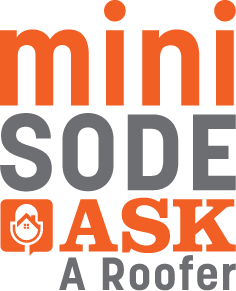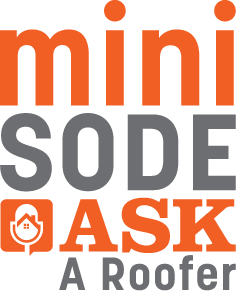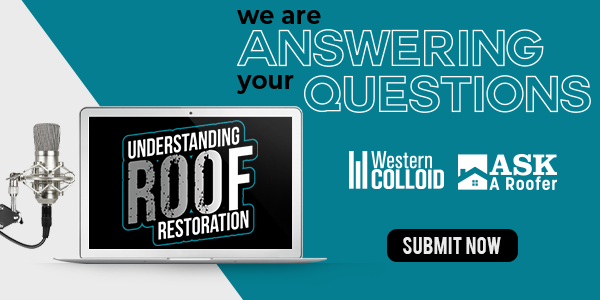The Importance of Attic Insulation - PODCAST TRANSCRIPT
November 6, 2024 at 6:00 p.m.Editor's note: The following is the transcript of a live interview with Lori and Matt Swanson from Guardian Roofing. You can read the interview below or listen to the podcast.
Intro: Hello, everyone. Welcome back to an Ask a Roofer mini-sode where we give you bite-sized information for your home and building roof health. Today, we're going to be talking about attic insulation and how important it is and I am here with Matt Swanson from Guardian Roofing. Hi, Matt.
Matt Swanson: Hi. Thanks for having me.
Megan Ellsworth: Absolutely. I am so excited to leech some more wisdom and knowledge from you. So why don't you tell everyone a little bit about you and Guardian?
Matt Swanson: Sure. So my wife, Lori Swanson and I, we started Guardian back in 2005. We are a strictly a residential contractor. We do residential re-roof and repair, gutters and insulation and that keeps us pretty busy. We have about 120 full-time employees, and we service the greater Puget Sound area.
Megan Ellsworth: Wow. 120 employees. That's amazing and almost 20 years in business. Congrats.
Matt Swanson: Yeah, getting close. Thank you.
Megan Ellsworth: Okay, so we're here today to talk about attic insulation. So important. What are the key benefits to proper attic insulation for a home?
Matt Swanson: Sure. Well, I think the best way to put it in perspective is we are coming at this from the roofing in, right? So everything that we've done since we started our company revolves around what we can do to make the customer's roof last as long as possible. And for a long time, one of the variables that we made sure that we solved for was the ventilation because we weren't getting enough intake and exhaust in the attic and out of the attic. Then those shingles would cook and basically degrade and go away faster because the granules will start falling off because all the heat build up in the attic. Well, after a while, we started to realize that there was another variable that we needed to solve for and that was the insulation because no matter how well you did at fixing the ventilation and getting air circulating through there, if that warm air from the house is consistently getting up into the attic space, then you basically have the same problem. The ventilation has to work that much harder.
Matt Swanson: There's an added benefit to making sure that the insulation is adequate and done correctly and that is the customer's actual heating and cooling costs. So the codes that they use for R-value are a little bit tricky because R-value is based on a test, which is insulation basically inside a box. Well, that's not what an attic is like. If you think about two rafters sitting there and insulation sitting in between, it isn't enclosed. So the thing that's typically missed when we talk about attic insulation, and we always think about R-value. We have to get enough R-value. It's got to be deep enough, whether it's whatever type of insulation it is. But the key to it is the air seal.
Matt Swanson: So the top plates of the walls, can vents, pipes around HVAC units if they're in the attic, all of those areas need those little cracks sealed because if they don't, you can lose up to 50, even 60% of the R-value of re-insulation.
Megan Ellsworth: Wow.
Matt Swanson: And to put that in perspective, the top plate of a wall that goes around the outside of a house that's right there down by the bird blocks, just sealing that top plate up plugs a hole about the size of a lid of a garbage can. And what we see a lot of times, especially in the Northwest because it's damp all the time, is the heat from inside the house coming up through those top plates. Then it hits that moist air that's coming through the bird blocks and then it condenses actually on the plywood and over time, turns into mold. So ventilation on its own will not fix that. You have to address and make sure that there's enough insulation in the attic and that the air sealing is done correct. Then their entire attic will function the way that it's supposed to.
Megan Ellsworth: Wow, that is great. So let's say a homeowner notices that their attic is really hot in the summer and really cold in the winter, and I mean, maybe they have a mold problem that they don't even know about. Where do they start? Do they call a roofer? Do they call? Who do they call? What do they do?
Matt Swanson: Well, it's a really good question and it's one of the reasons that we really kind of dove head first into this because we realized that our clients weren't really getting all of the answers that they needed in one place. Because like we talked about before with the variables, right, you got the roof, you got the ventilation and you got the attic. If you don't fix them all, they're not going to work in concert with each other. You can call an insulation company and the majority of insulation companies will do a great job and come out and they'll air seal and they can remove the old insulation and they can tell you about all that stuff, but they're probably not going to make sure that your ventilation is working correctly. So if you find someone that has the experience that can kind of make sure that those two things, the ventilation and the insulation is acting in concert, that's your best bet as a home.
Megan Ellsworth: Okay. Wow. Well, this is great news that it's definitely an easy solution and they can just call an insulation company or a roofer and have them check it out.
Matt Swanson: For sure.
Megan Ellsworth: Absolutely. Okay. Well, Matt, thank you so much for answering our burning questions about insulation and thank you for sharing your wisdom.
Matt Swanson: Oh, thank you so much. So glad we can help. The wisdom thing, though, that indicates [inaudible 00:05:46].
Megan Ellsworth: You're so knowledgeable.
Matt Swanson: Well, thanks for having me. We always look forward to a chance to anything we can do to help.
Outro: Absolutely. All right, well, thank you again and everyone out there listening, I'll see you next time on the next Ask a Roofer mini-sode.














Comments
Leave a Reply
Have an account? Login to leave a comment!
Sign In